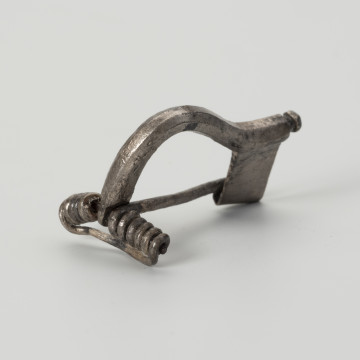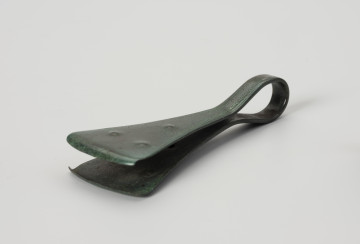
Oscar Almgren type 7 fibula
150 — 250
National Museum in Szczecin
Part of the collection: Antiquity
The clasp, made of silver, belongs to the group of fibulae with a high catch-plates. The clasp has a small knob at the end of the bow, which is further decorated with two beaded rings located at the base of the foot. A similar third ring is located on the bow directly above the spring. The presented fibula was one of the objects included in the grave goods of burial no. 36 in the cemetery in the village of Żalęcino, the poviat of Stargard. Dating to the period of Roman influence, the necropolis was bi-ritual. The reason for this is that the people who buried their dead there followed both, the inhumation and cremation rites. Grave No. 36 was an inhumation grave, and, in addition to the fibula presented, housed a second bronze clasp of a different design and an ornamented horn comb. Site No. 4 in Żalęcin was excavated between 1976 and 1979 by a team of archaeologists from the National Museum in Szczecin. Prior to this, however, it had been partly destroyed by gravel extraction which brought the first objects to sight. The 14 inhumation graves and 1 cremation burial examined by the archaeologists date to the late 2nd and early 3rd century, which is consistent with the dating of the presented clasp to the turn of the 2nd and 3rd centuries. Bartłomiej Rogalski
Author / creator
Object type
fibula
Technique
casting, forging
Material
silver
Origin / acquisition method
field research
Creation time / dating
Creation / finding place
Owner
Muzeum Narodowe w Szczecinie
Identification number
Location / status

150 — 250
National Museum in Szczecin

około 900 p.n.e. — 750 p.n.e.
National Museum in Szczecin

980 — 1100
National Museum in Szczecin
DISCOVER this TOPIC
Castle Museum in Łańcut
DISCOVER this PATH
Educational path